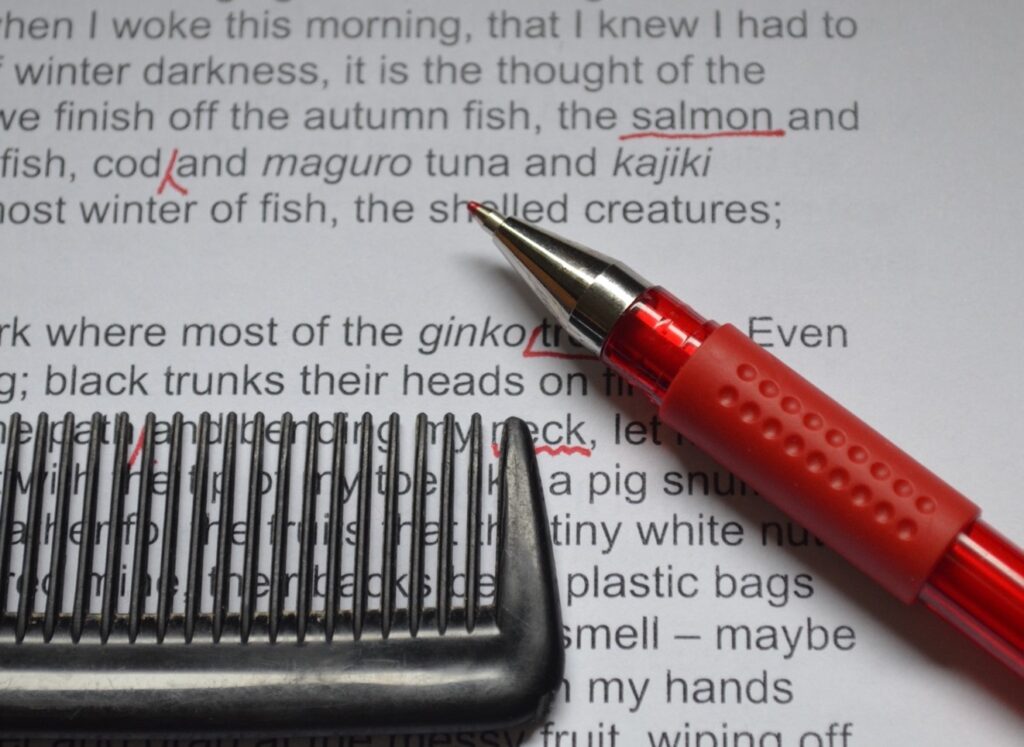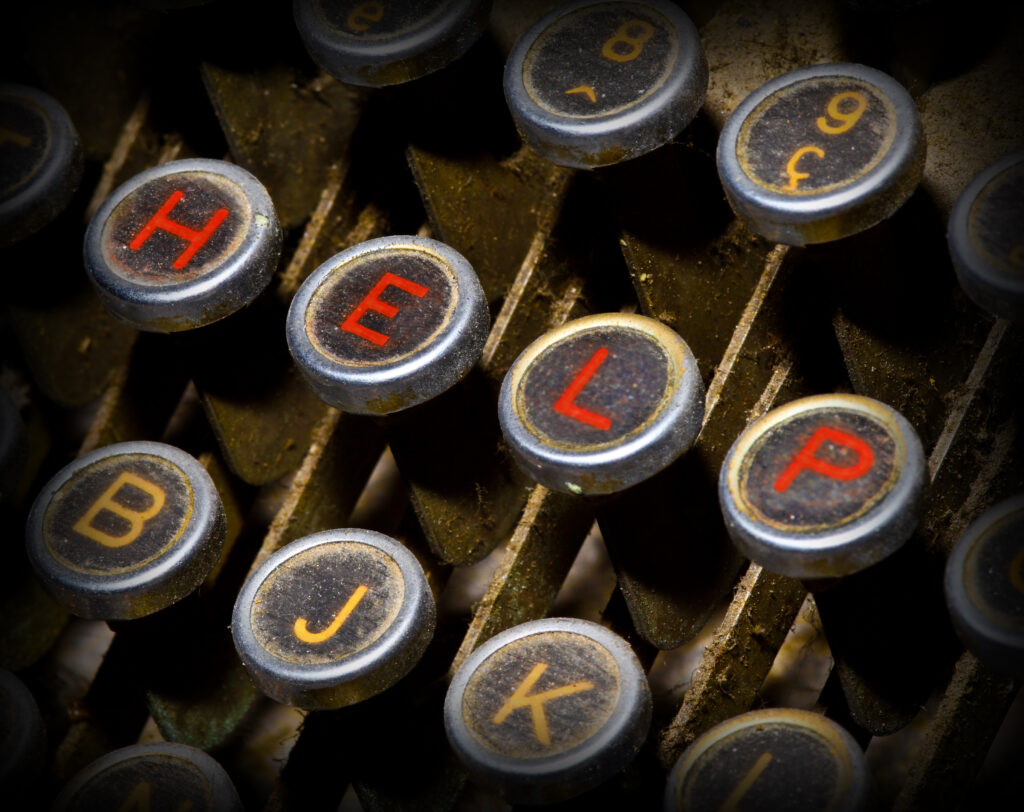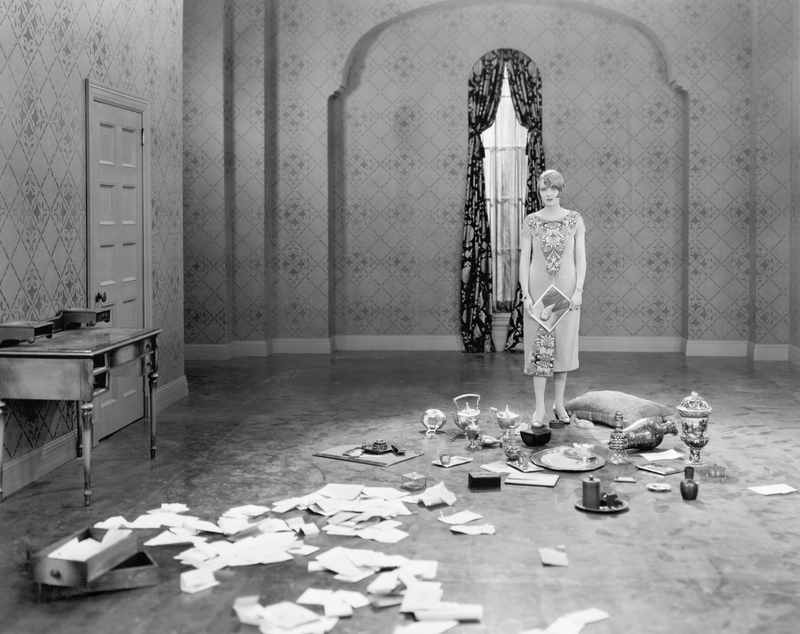Any fiction writer thinking of getting some editing done will be faced with an array of confusing terms, so here is a quick guide to fiction editing. What was once called ‘getting your work proofread’ has become a several-headed monster of complication and diversity, leaving the perplexed writer throwing up their hands and screaming, ‘Just tell me how bad it is.’ (Or good if they have a healthy level confidence and optimism.)
But those heads did not grow because editors like faces. They grew organically out of the increasing needs and the diversifying skills of the profession that is editing fiction. So, to desperately extend a metaphor, what do those heads look like and which one do you need to hunker down and get face to face with?
I like to see fiction editing needs in terms of distance and sandcastles.
Let’s imagine you have some good sand with a good supply of sea nearby. How do you create the premium sandcastle? Here are the four rough stages of the build.
- Drawing out the blueprints (also known as mentoring or coaching)
- A distant view of the hills (also known as developmental fiction editing, structural editing, or story editing)
- Getting up close and personal (also known as copy-editing or line-editing)
- The fine-tooth comb (also known as proofreading)
Drawing out the blueprints (also known as mentoring or coaching)

This is for the chaos at the beginning of the writing process. Writers approach each story with a different ‘lead’. It might be a character whose voice amuses and torments you, a place you need to show, or a story that keeps adding to itself. At this stage, you might be filled with excitement, or daunted by the thought of the work ahead. Maybe you have a few good chapters and some great ideas for endings, but you have precious little clue as to what will happen in the middle and are really not sure whether Aunt Margaret should die or even be in it. This is when mentoring might help.
Mentoring – what it is
Mentoring is new in editorial help – a more recently grown head. What does it involve?
All editing tends to be bespoke, but mentoring is the most bespoke. When looking for a mentor, you will want someone who has a feeling for your work and who you feel comfortable working with. When you find a promising candidate, the first thing to do is meet.
In these days of technology and plague, this might be physical, digital, or even analogue. The prospective fiction mentor will usually offer this for free because neither of you know if you will be able to work together yet. In this initial meeting, you share what your project is, where you are with it, and what you feel you need from a mentor, while your prospective mentor considers whether they are a good fit. If the sparks start to fly (or the roses start to bloom – depending on genre) then you will look at booking some meetings. Here mentoring differs from all other editing: you pay for it per meeting.
Mentoring – how it works
What happens in these meetings will depend on you, the mentor, and the project. (Remember that whole bespoke thing.) But it will involve discussion. Your mentor may ask you to tell the story and this may allow questions to bubble up from either of you. It might become clear that certain story threads have plot holes or that certain characters are unnecessary.
At some stage, maybe when the plot feels sound, your mentor may ask you to get something written down, a few chapters or all of Part One. Or maybe in-depth discussion is the way forward for you. At its most basic, mentoring is a kind of handholding that stretches through the whole ‘shitty first draft’[1] stage. You may require gentle coaching to remind you of why you are doing this, or long black metaphorical whips and stern, ‘You said you would have Part One finished!’ interventions. It may span three, ten, or more meetings and take anything from a few weeks to a few years. But it will involve someone taking a close and involved look at your writing, being on your side, and diluting that painful feeling of you being out there on your own with your words.
A distant view of the hills (also known as developmental fiction editing, structural editing, or story editing)

When you have that completed draft you will want to know if it is any good and, related to that, what to do to get it to the high standard it needs to reach to be accepted by agents or publishers or, if you are self-publishing, to be sent to the printer. Writers are often too close to their writing to know what is working – and what isn’t. So, our sandcastle is built; it is looking good, though that west tower may need some shoring up and you are not sure if the moat is deep enough. At this point you might ask family and friends to have a look, or you might use beta readers: people who will read through your work – for free or as a professional service – and give you feedback. Most writers have an idea, however vague, of what is problematic in their work: the plot is not strong enough, the pace is too slow, there is too much ‘telling’. Or they know that they struggle with point of view and getting dialogue right. These are exactly the areas that developmental fiction editing will try to identify.
Different types of developmental edit
What the developmental edit does is clear: it steps back and identifies the bigger problems that a manuscript has and also where it is successful. What is less clear is the level of detail into which the editor will go when they give their feedback. There are, very roughly, two types:
- a short report with minimal or no actual comment in the manuscript;
- a long report, often with a detailed breakdown of each section of the work, and an extensive commentary written onto the manuscript.
The first is often called a manuscript critique, the second a developmental edit or a full developmental edit. (Good editors are clear about what they offer. Read their websites carefully to see what you are ordering.)
What type of developmental fiction editing do I need?
So how, when you realise that you need a developmental edit, do you decide which of these edits you need? The first question to ask is how much help you feel you need. Do you want a hint, a bit of a nudge in the right direction? Maybe, you just need to be told that you have a great idea here, but that there is a lack of tension throughout and please see the resources attached. Or that the story is sound, but is Mr Black’s plot line necessary? If this is enough for you and you are confident that you know enough about the craft of writing to go about fixing your problems on your own, then a manuscript critique may be what you need. But, if you are less confident about your knowledge of writing craft, you may need an edit that goes in-depth on all aspects of the manuscript. This type of edit will pick out the weaknesses and offer a detailed analysis of them. If you want possible solutions that may be applied, then you may prefer to go with a full edit.
A rough idea of cost
The second, and maybe more relevant, question is: how much money can I afford to spend on this? A critique is cheaper than a full developmental edit because it takes a lot less time and expertise. When you ask an editor to do a developmental edit, you are asking them to live with your book, puzzle it out, struggle with it, and perhaps offer suggestions as to how to fix it. And there is a cost to that.
But what developmental fiction editing does, whether detailed or general, is give the author an idea of where to take their manuscript next. How ready is the book? Are there big issues which require a complete rewrite of some or all sections? Is the basic idea on a precarious peg and could it do with a serious rethink or possibly even abandonment? Or does the book need a shuffling of chapters, a rewrite of chapter six? Maybe it needs a real questioning as to why Aunt Margaret needs to die and Aunt Penny gets to live? This edit helps to move you to the next stage: having a story that holds. At that point, you are confident that all the big work has been done – structure, plot, sub-plots, time scale, characterisation. Now you can get on with the fine work, home in on the words you are using, their beauty, effectiveness, cleverness. A good developmental edit gives you leave to do this.
Manuscript critique and developmental edits are usually offered as a set price. Most editors will offer a price for an average manuscript (under 85,000 words for adult fiction) with the price increasing for larger manuscripts.
Getting up close and personal (also known as copy-editing and line-editing for fiction editing)

You have had the development edit, or the perusals from the brilliant beta readers. All lumps are smooth. That castle is the best-shaped castle with moat, bridge, and every tower in the correct place . And, you have written it well, pouring all your word skills into making it the best it can be. You just need someone to have a wee look-see. You need a copy- or a line-editor.
Many editors use the terms copy-editor and line-editor almost interchangeably. I do. It is editing the work line by line, attending to every detail. This is where the editor’s skill as a word worker comes in. Here the editor will look at the language: the repetitions, the accuracy of the words used, pace and flow, as well as punctuation and spelling. They will keep an eye out for consistency (blue eyes should stay blue, pregnancies should last nine months – unless you’re a dog, then it is three months) and for facts. (Actually, dogs are pregnant for about two months – an editor would have caught that.) In terms of the castle, this is where pebbles are into moats, fashion our best shells along our bridges and adorn our ramparts with stone-people, feathers, and the odd bone.
There are different ways to charge for this. Some editors will offer a price for the whole project (as in developmental editing above). Others may charge per thousand words or by the hour. Editors may also offer this service for short stories – to help you get them ready for competitions or journals – or for the first part of your novel, sometimes even offering a submission package to help you to approach agents, publishers, or novel-writing competitions.
A fine-tooth comb for your work (the proofread)

The work is done. Both story and words are smooth as glass. But if you’re an independent author readying yourself to send your manuscript to the printer, you know that the manuscript needs to be as close to perfect as possible. The proofreader will take the pretty much perfect manuscript and pick out all those teeny errors that have been missed. It might be a typo, a homonym, or a confusing comma. This is the bit where that top-tower flag gets straightened, and that cockle shell is made to face in exactly the right direction.
Publication
Leading us to publication. Oh, happy day! And that is when we … Well, that is a whole other head-rich monster to analyse. Let’s keep that for another day.
Alison Gray is an Intermediate member of CIEP.
www.alisongrayeditorialservices.com
Twitter @algrayeditor
Facebook Alison Gray Editorial Services
[1] Anne Lamott, Bird by Bird, New York: Anchor Books, 1995, p 21.




